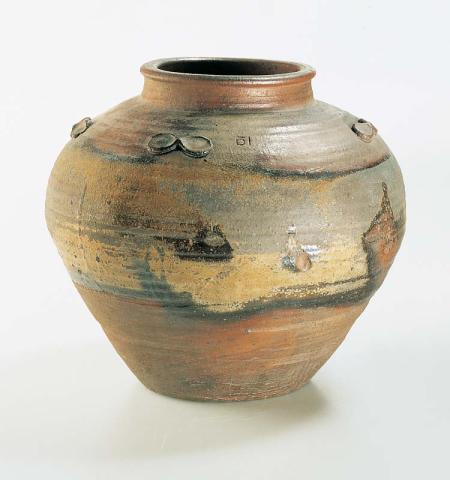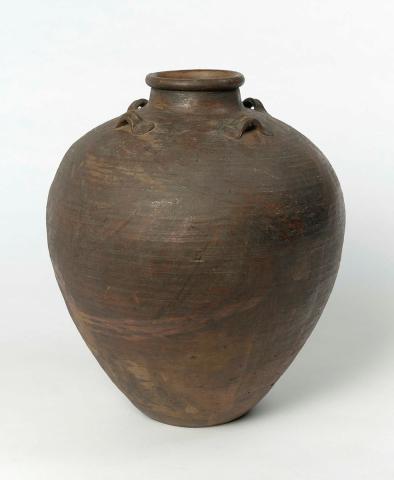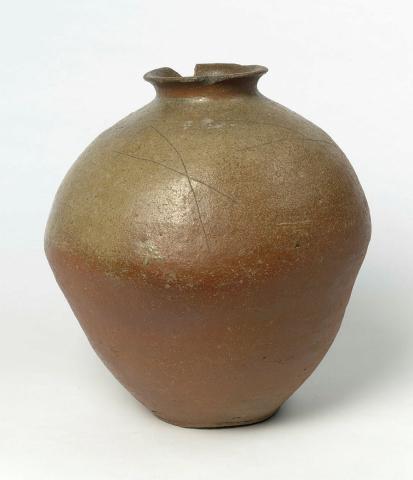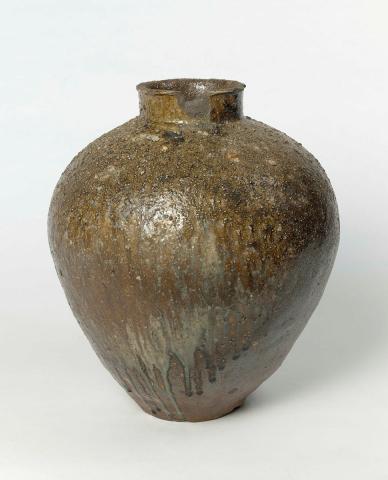Six Old Kilns
By Geraldine Kirrihi Barlow Ineke Dane
International galleries February 2024
During the Kamakura (1185–1333 CE) and Muromachi (1333–1568 CE) periods in Japan, the kiln sites at Seto, Tamba, Shigaraki, Tokoname, Echizen and Bizen — collectively known as the Six Old Kilns — produced durable, high-fired stoneware vessels. These wares were created from local clays that were shaped into jars by coiling clay ropes on a potter’s wheel. After firing at high temperatures, diverse decorative effects were available; many of the jars were covered in a natural glaze that formed as wood ash was blown through the kiln, settling on the pots and melting to glass in the intense heat.
This stoneware became particularly renowned from the fifteenth century, when it first came to the attention of the exponents of the chanoyu (tea ceremony). The vessels’ unsophisticated manufacture and spontaneous glaze results gave them an engaging individuality that perfectly suited the heavily Zen-influenced tea ceremony, evoking the principles of an aesthetic appreciation known as wabi-sabi, which values simplicity, unpretentiousness, signs of natural process and imperfection.
Connected objects

Dish c.1700s
- BIZEN KILNS - Creator
Related artists
Metadata, copyright and sharing information
Parent story
This story is a sub-component of:
About this story
- Subject





